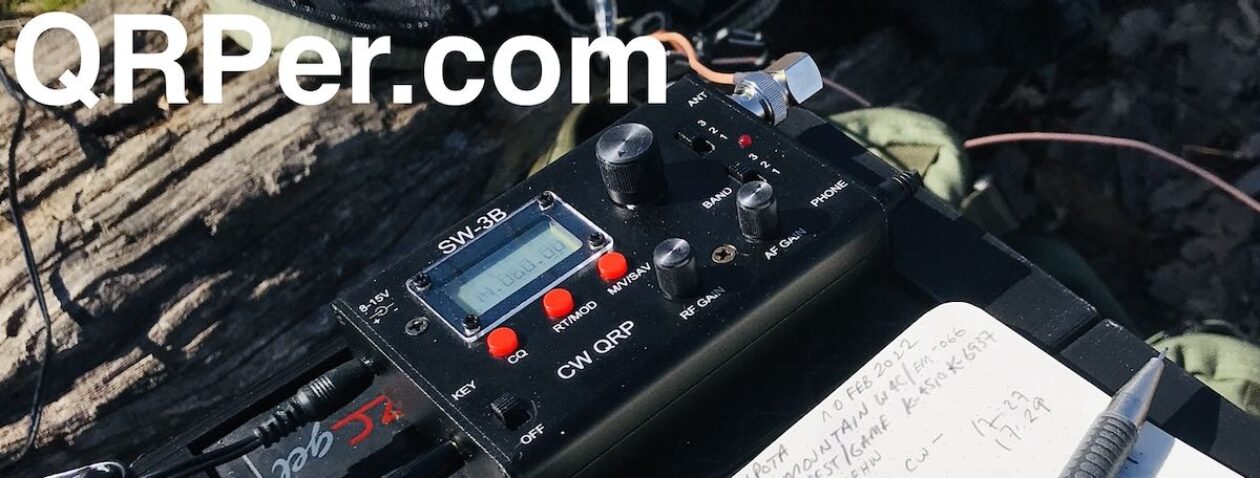By Conrad Trautmann (N2YCH)
I tried using an Alpha Antenna 100w 10-40m mag-loop antenna for a POTA activation. I operated on FT8 so I could monitor where my signal was being received by using the PSKreporter.info real-time signal reports from stations that spotted my transmission. I really didn’t know what to expect or how a loop antenna would perform in the park compared to a vertical or wire antenna. Did it work? You bet. Would I recommend it? I’ll share my observations and results below and let you know at the end.
I bought this antenna used on QRZ.com’s swapmeet. It was clear to me upon receiving it that the prior owner had taken very good care of the antenna. I set it up on my patio for a quick test before heading to a park.

It sets up quickly. The tuning is a little challenging to learn at first but there’s no doubt when you get it right, since the received signal is easy to peak once you find resonance. The tuning knob has three turns from 40m up to 10m. Moving it slowly from the bottom of the HF band up to the top, you’ll find the sweet spot and you can peak the received signal on your radio’s S-meter. I checked it with my RigExpert antenna analyzer and as you’d expect, the bandwidth was very narrow, but it was resonant and the SWR was 1.4:1.
The Alpha mag loop can do 100 watts SSB but only 5 watts on digital modes. I fired up my KX3, set it for 5 watts and called CQ. I made three quick contacts and was satisfied that the antenna was working. I checked the spots on pskreporter,info and found it interesting to see a narrow band of stations from Minnesota and Wisconsin down to Florida spotting me.

On to the park: Indian Well, US-1684 in Shelton, Connecticut
Knowing that the antenna was working, I brought it out to one of my favorite places to activate, Indian Well State Park (US-1684). Again, set up was fast and I was able to tune up on 20 meters pretty easily.

The antenna was receiving the FT8 signals at S-9 with the KX3’s pre-amp off and you can see below that I was decoding nearly 50 stations per FT8 cycle. If you look closely at the JTAlert screenshot below, you can see I was receiving stations from all over the US as well as Canada, South America and Europe. There’s no doubt the mag-loop can hear very well.

I called CQ and had a few responses right away. However, I was finding it challenging to get stations to reply. It took almost an hour for me to get my 10 contacts to activate the park, which is unusual. I should mention that the space weather was acceptable, sitting just below Kp3, so that wasn’t the reason.
Once again, I checked Pskreporter.info. Interestingly, it had the same pattern of spots that I saw when testing the antenna at home, a band from Minnesota to Georgia. Of the first 10 contacts I made, four were in North Carolina, two in Florida and the rest were coming from within that narrow band who could hear me.

I understand that a mag loop is directional, so I tried moving it 90 degrees to see if it made a difference. Not really. The spot map looked the same after the change in direction. I was able to receive a few more EU stations after I moved it. I did have to re-tune the antenna after I turned it, the SWR had gone through the roof.
For comparison, after struggling to make contacts on the loop, I decided to set up my “go-to” antenna of a 17’ telescoping whip on a 10’ mast with a counterpoise.

I unplugged the mag loop and plugged in the vertical using the same transceiver set at 5 watts. Take a look at the stations who could spot me on PSKreporter now…

Clearly, that same 5 watts from the KX3 had better coverage on the vertical than using the mag loop.
Here’s a screenshot of WSJT-X on the vertical (click image to enlarge):

Once I switched to the vertical, I knocked out 10 more contacts in just 20 minutes.
So, after all that, what do I think?
The Mag Loop sets up quickly, uses very little space and finding resonance isn’t difficult to do. It receives very well, of course this is one of the true advantages of mag loops, is their inherent ability to receive well in noisy environments.
As an antenna to use for transmission? Well, I think this is where the challenge lies, for me anyway. It was certainly hearing stations way down in the noise from far away. However, as you can see by my real-time reception reports, it did not give me the wide transmission coverage that I’m used to with the vertical. Maybe this would be different on SSB with 100 watts, but it’s a difficult to measure SSB reception like you can with digital.
Can you activate a park with it? Yes, indeed. Would it be my first choice for POTA? Probably not. If you were using this on SSB, the antenna itself (not the radio) would need to be re-tuned for every frequency change (if you were hunting), which is not convenient. If you are the activator, then you could tune up for the frequency you selected and it would be good to go.
My next test with this antenna is to try tuning it to a WSPR frequency and comparing spots it receives to my other antennas. I suspect this it where it will shine.
Stay tuned!


































 This will be corrected tomorrow.
This will be corrected tomorrow.























